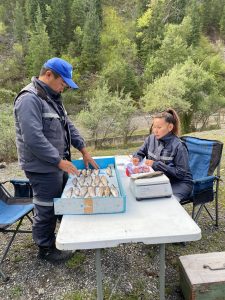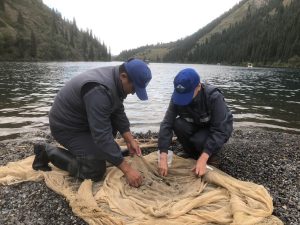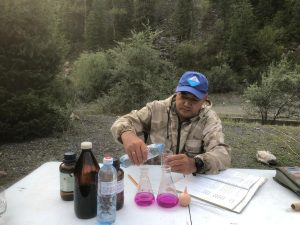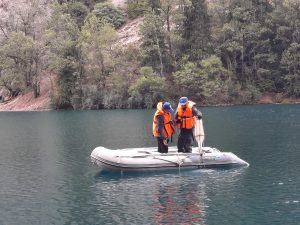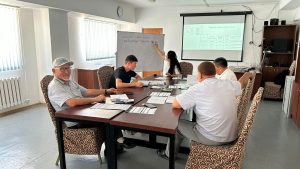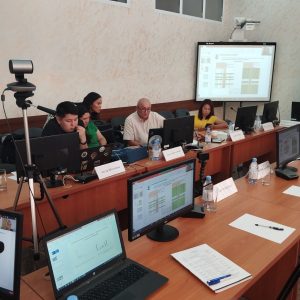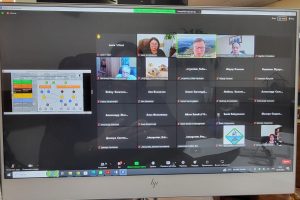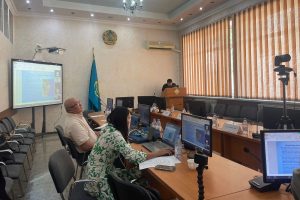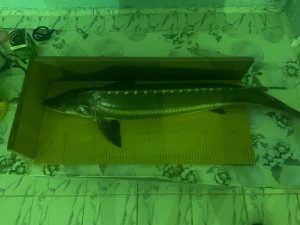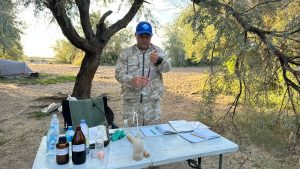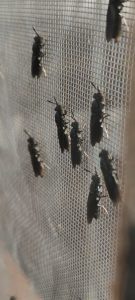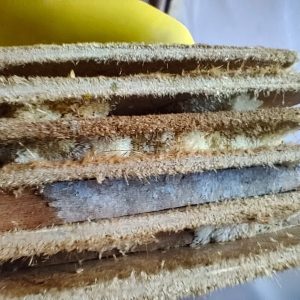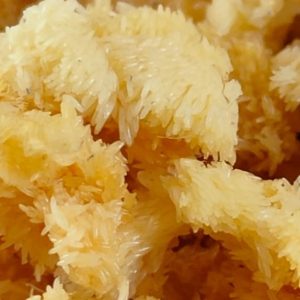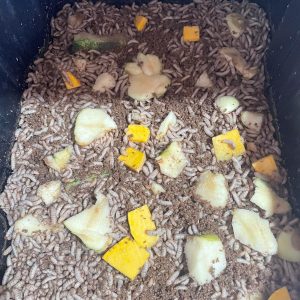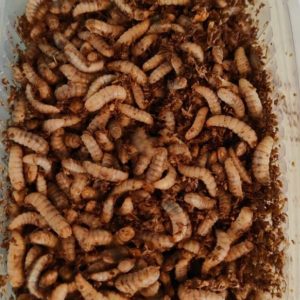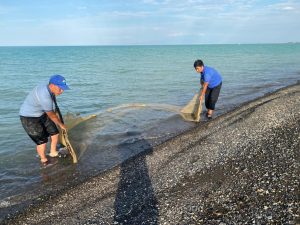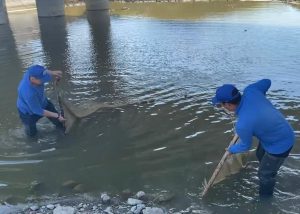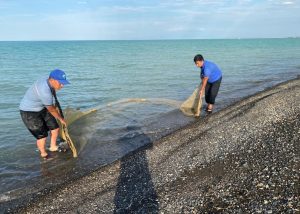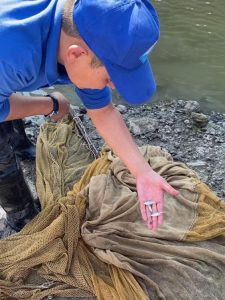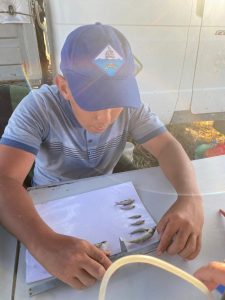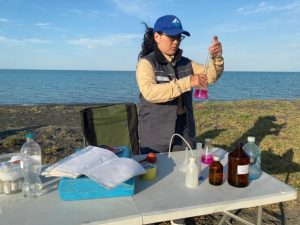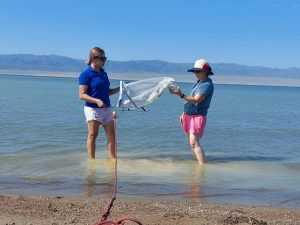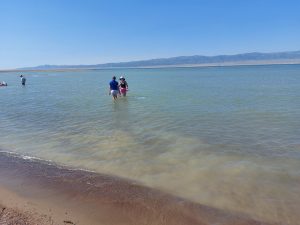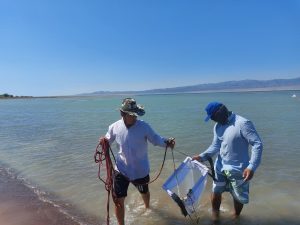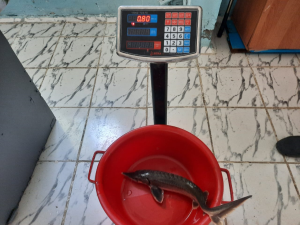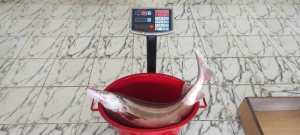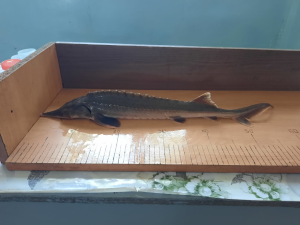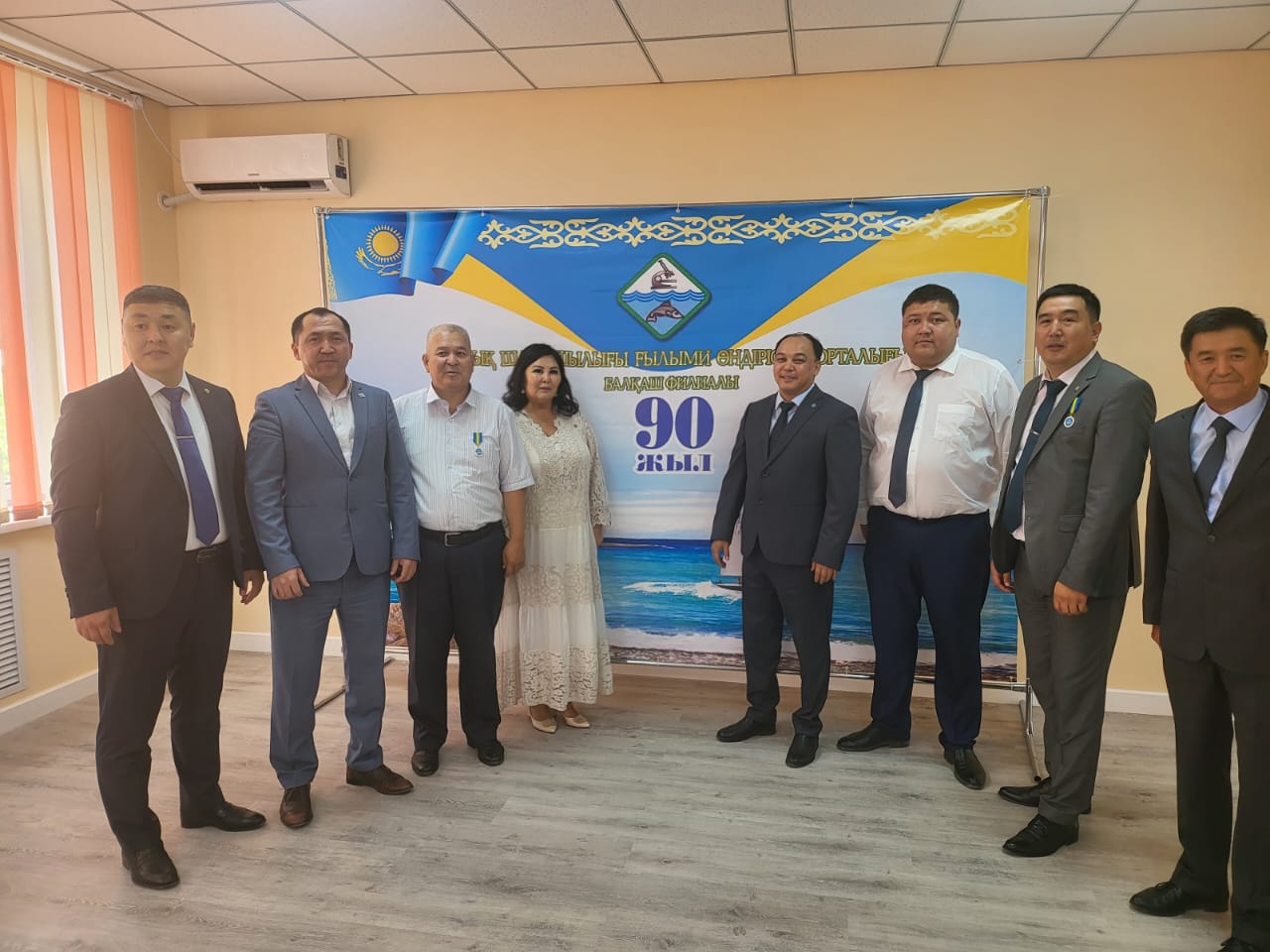Currently, employees (head of the expeditionary detachment Makambetov S.Zh., senior researcher Ablaisanova G.M., acting researcher Bekturov D.S., junior researcher Bakkozha Zh.M., senior laboratory assistant Tursynaly Sh.N.,) LLP “Fisheries Research and Production Center” on the lakes Lower and Middle Kolsai, located in specially protected natural areas (Protected areas) of the State National Natural Park (SNNP) “Kolsai Kolderi” the following comprehensive research works are carried out on BP 256 (subprogram 102):
– hydrochemical sampling;
– selection of hydrobiological samples during the growing season (zooplankton, phytoplankton, zoobenthos);
– sampling of juvenile rainbow trout by juvenile sledge (fishing net) on Kolsai Lakes to assess natural reproduction;
– nets are set up to assess commercial fish stocks.
Also, to study the current state of native fish species, an additional delusional catch of the river was carried out. Shelek and 12 Scaleless osman and 1 Tibetan stone loach were found.
For reference: The Lower and Middle Kolsai lakes are located in the Almaty region and complex research work has been carried out by the FishRPC since 2017. According to literary sources, the initial ichthyofauna of the Lower Kolsai Lake consisted of native fish species – Scaleless osman (Gymnodyptichus dybowskii, Kessler, 1874) and Tibetan stone loach (Tziplophysa stolickai, Steindachner, 1866).
Previously, the Middle Kolsai Lake was fishless, and in 1965-1969, rainbow trout juveniles were launched into the Lower and Middle Kolsai Lakes. The settlers subsequently successfully naturalized and formed self-reproducing populations, completely displacing the Scaleless osman and partially Tibetan stone loach, which is now very rare in catches.
